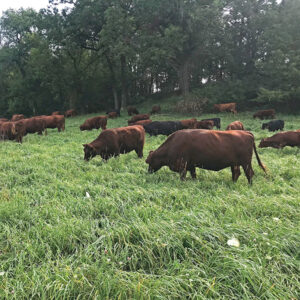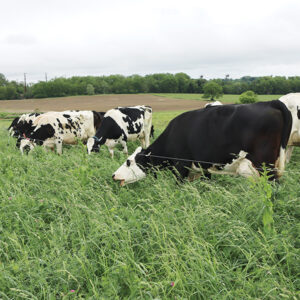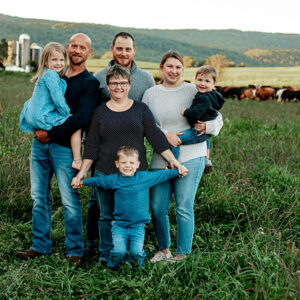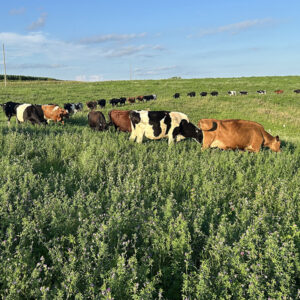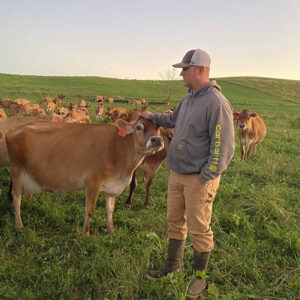A niche of beef, lamb, and pizza
By Martha Hoffman Kerestes
Decorah, Iowa — Tom and Maren Beard are building community around their grazing farm in the rolling Driftless hills of northeastern Iowa.
That includes direct marketing grassfed lamb and beef raised on the farm, and it includes welcoming hundreds of folks onto their farm each weekend during warm weather for wood-fired pizza made with local and regional ingredients.
The Beards manage around 250 acres of land, about half of it rented. Tom does about 50 acres of organic row crops, and the rest is permanent pasture and hay ground. Only half of the land is tillable, given the slope and tree cover of some parts of the acreage.
Managing both species
Tom and Maren keep about 150 hair sheep ewes and 20 cow-calf pairs and finish 6-10 head of beef a year slaughtered at 20-30 months (the rest of the calves are kept as replacement heifers).
Both species are moved once a day with 30-day rest periods for pastures when the grass is growing fast, and lengthening when growth slows.
Continue reading “Building a diversified grassfed farm”
